2023 Trainees
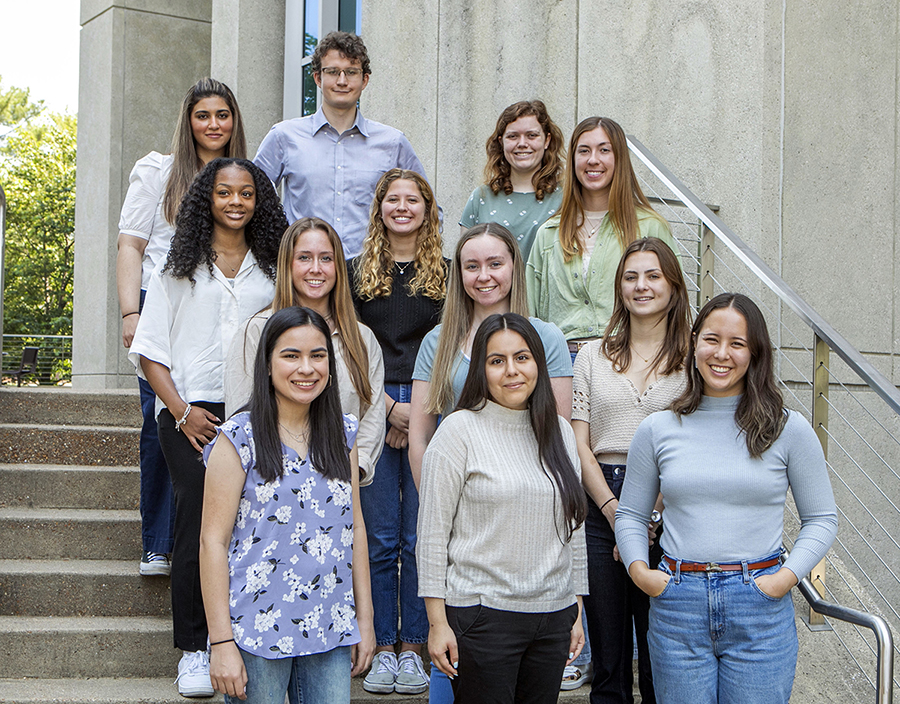
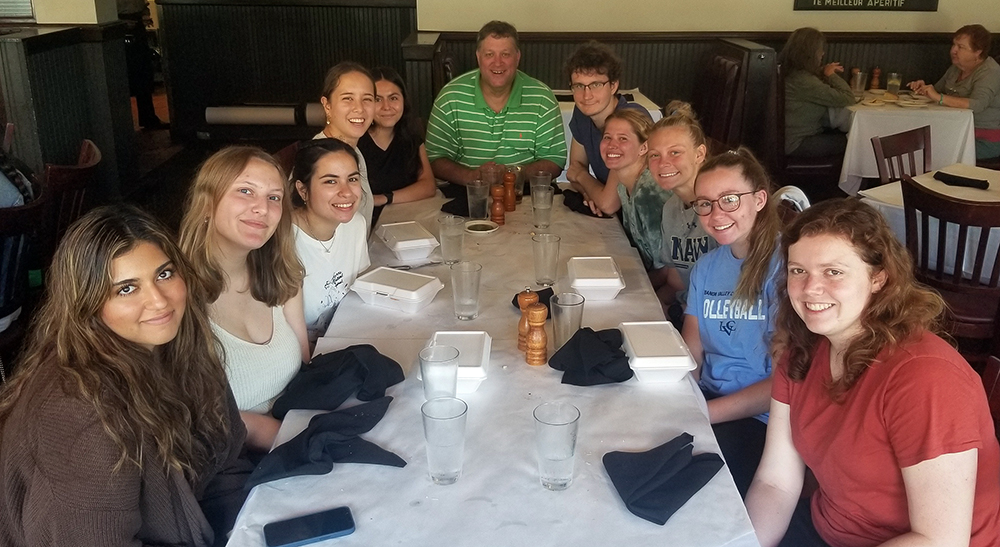
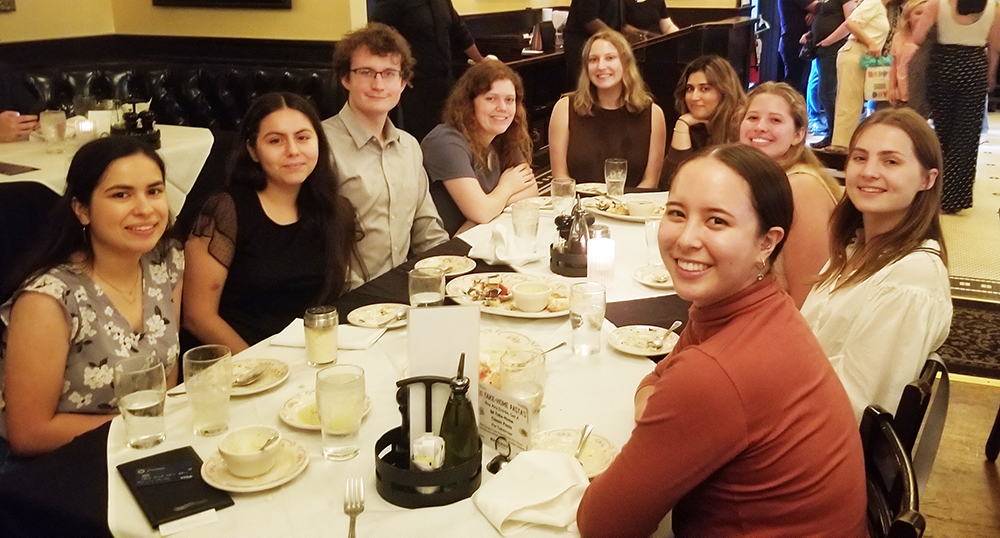
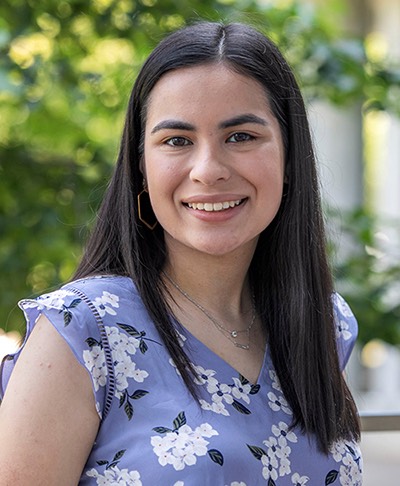
|
Rakel Ang
Mentor: Jeffrey Johnston |
|
|||
|
"Synthesis and Application of Amidine Amide (AmA) Catalyst" Nitroalkanes have been extensively recognized as pivotal intermediates within organic chemistry. Their intrinsic reactivity affords a potential to transform them into an array of functional groups, such as amides, amines, and aldehydes, through a singular step. These functional groups frequently appear in drugs and other bioactive molecules, therefore cementing their importance in drug discovery and total synthesis processes. We have synthesized and utilized an organocatalyst termed AmA to enable the enantioselective reduction of nitroalkenes into nitroalkanes. Subsequently, we applied this to a specified target molecule known as (+)-SJ733. This molecule holds therapeutic promise in the treatment of malaria by inhibiting the ATPase activity of P. falciparum, a unicellular protozoan parasite responsible for the disease. Notably, no enantioselective pathway has been identified to date for the synthesis of this drug. Employing the AmA catalyst paves the way for accessing the stereocenter next to the pyridine ring. As an initial step toward the target, we applied this methodology to a model substrate. The results gleaned from this process have yielded significant insights into a critical nitroalkene intermediate, thereby underlining the practical potential of our study. Bio. Rakel was born and raised in Southern California. She is double majoring in biology and chemistry at Pepperdine University, where she has been conducting cell biology research. After graduating in 2025, she hopes to pursue a PhD in chemical biology or medicinal chemistry. Outside of the lab, she enjoys cooking, baking, painting her nails, and playing board games. |
|
|
|||
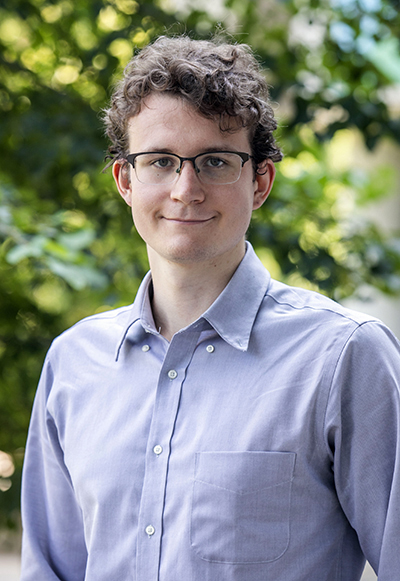
|
Aodhan Beattie
Mentor: Brian Bachmann |
|
|
||
|
"lkyl and Selenium SAM Analog Generation for the Methylation of Everninomicins" Everninomicin A is an antibiotic derived from soil actinomycete Micromonospora carbonacea that was developed and put through clinical trials with the trade name Ziracin but was ultimately dropped during phase III. Further derivatization of the drug is desired but the difficulty of the generation of analogs through chemical synthesis means generating unnatural everninomicin analogs through biosynthetic approaches is the most feasible approach. Our goal is to use the natural promiscuity to S-adenosyl-methionine (SAM) analogs reported in many methyl transferases to generate everninomicin analogs. To generate these analogs, AtHOL1, a halomethyl transferase, known to methylate S-adenosyl-homocysteine (SAH) using iodomethane, and mutants have been screened for activity on a variety of alkyl halide substrates. Additionally, chemical synthesis of seleno-adenosyl-homocysteine (SeAH) was pursued to increase the reported low stability of SAM analogs. Bio. Aodhan is a rising senior in chemical engineering at Cornell University where he has worked in Dr. Sijin Li’s lab studying soybean secondary metabolism through heterologous expression of soybean enzymes in yeast. In order to gain a fresh perspective on what research on bacterial natural product biosynthesis looks like he applied to and attended the 2023 NSF Chemical Biology REU program at Vanderbilt. This summer he worked for Dr. Brian Bachmann, learning about research on natural product derived antibiotics and the actinomycetes that produce them. |
|
|
|||
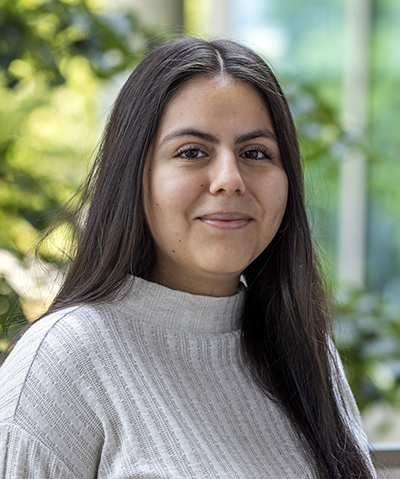
|
Kathy Colin
Mentor: Daria Kim |
|
|
||
|
"Site Selective Sugar Functionalization via Pradimicin Based Catalyst" Pradimicin A (PRM-A) is a natural product with lectin-like function, known for its antibiotic and antifungal properties. Recent studies have highlighted its potential as a novel therapeutic agent against the human immunodeficiency virus (HIV). This is attributed to PRM-A's ability to selectively bind D-mannose, a crucial component of the innate immune system involved in host-virus interactions, via a non-covalent network comprised of Ca2+-mediated chelation and hydrogen bonding. Our research aims to explore carbohydrate-ligand interactions by designing a catalyst template inspired by PRM-A. The high selectivity and binding affinity of PRM-A to D-mannose could be exploited to instigate site-selective carbohydrate modifications, which traditionally have been difficult to achieve without the use of protecting groups. Our catalyst design leverages PRM-A’s non-covalent molecular recognition network while also maintaining a photo excitable motif that enables carbohydrate activation via photochemically-induced H-atom transfer events. Optimization of our catalyst includes tuning its photophysical properties by derivatizing its photoexcitable moiety. While our initial catalyst design incorporated the anthraquinone motif featured in the natural product, we are currently exploring alternative motifs such as xanthone, thioxanthone, and benzophenone, all of which are common organic photocatalysts. Ultimately, we aim to achieve site-selective carbohydrate modifications through our catalyst’s non covalent network and better understand biologically-relevant carbohydrate-ligand recognition events. Bio. Kathy Colin, a rising senior at the University of Richmond, VA, is pursuing a Bachelor's of Science in Chemistry. This summer, she had the opportunity to work in Dr. Daria Kim's research laboratory, where she was mentored by second-year graduate student Valentina Guidi. Prior to interning at Vanderbilt, Kathy gained research experience as a Neglected Tropical Disease (NTD) Research Intern at AbbVie Pharmaceutical Inc. in North Chicago, IL. During this internship, she collaborated with medicinal chemists on designing and synthesizing new small molecule inhibitors targeting Tuberculosis. Kathy's primary research interests lie in the field of synthetic organic chemistry and medicinal chemistry, with a specific focus on drug development and discovery. Her plans for the future involve attending graduate school in the upcoming year and pursuing a career in the pharmaceutical industry as a medicinal chemist. |
|
|
|||
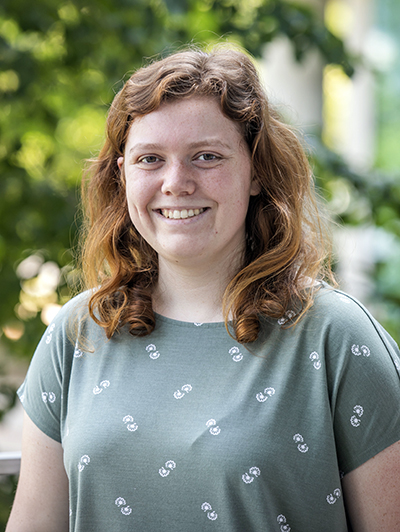
|
Anna Ermoian
Mentor: Nathan Schley |
|
|
||
|
"Exploring Alternative Metalation Approaches for Iridium-Catalyzed Borylation" The production and refinement of oil provides simple hydrocarbon byproducts that are inexpensive and abundant. Catalytic C-H bond activation serves as an efficient method to prepare useful organoboron intermediates from otherwise unreactive hydrocarbon feedstocks. In borylation reactions, alkyl boronate esters, a useful synthetic intermediate, can be accessed and further derivatized to different functional groups. Harsh conditions and stoichiometric quantities of expensive reagents required for other methods are undesirable for industrial applications, making catalysis, or the use of catalysts, a more attractive option. The Schley lab has focused on the borylation of sp3 C-H bonds of unactivated substrates like linear alkanes. There is expansive literature on borylation of sp2 C-H systems such as arenes, but the literature for sp3 is comparatively slim. A previous report described a novel signature ligand system with improvements from the older systems: the 2,2’-dipyridylarylmethane ligands. These ligands are hypothesized to cyclometalate with iridium via oxidative addition. We explored transmetalation as an alternative route to access cyclometalated catalyst derivatives. Using the 2,2’-dipyridylarylmethane framework, we synthesized a new aryl bromide ligand precursor to be transformed into an aryl magnesium bromide via a Grignard reaction. This ligand-Grignard may allow for a novel pathway to iridium-catalyzed borylation, expanding upon the types of precatalyst systems we can use for borylation, and resolve some of our questions about the identity of catalytic active species. Bio. Anna Ermoian is a rising junior at Scripps College majoring in Chemistry. At her home institution, she performs biochemical analysis and natural products research as a member of Dr. Ethan Van Arnam’s laboratory and will be presenting her research at ACS this fall. She is part of the leadership of her school’s Chemistry Club and works as a lab teaching assistant and peer educator. After completing her undergraduate studies, Anna plans to pursue a Ph.D. in Chemistry. |
|
|
|||
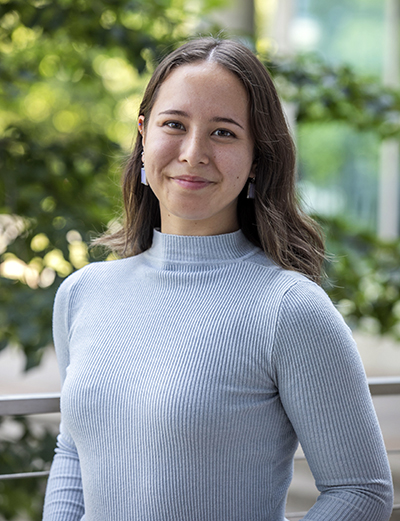
|
Jana Gaskin
Mentor: Steven Townsend |
|
|
||
|
"Scaling Sweet: optimizing the synthetic pathway of bacterial glycan donor 2-acetamido-4-amino-2,4,5-trideoxy-D-galactopyranose (AAT)" In the face of ever-increasing antibiotic resistance mechanisms, unlocking new strategies to fight pathogenic infection is an urgent cause. A potential inroad lies in bacterial exopolysaccharides, which help govern host-pathogen interactions. However, our current understanding of the influence of specific structural motifs within bacterial glycans on the cellular immune system remains limited, highlighting the importance of further study. Towards this end, we aim to synthesize the minimal repeating units of bacterial exopolysaccharides in an effort to investigate these interactions. The bacterial carbohydrate AAT (2-acetamido-4-amino-2,4,6-trideoxy-D-galactopyranose) is found within the repeating structure of select bacterial exopolysaccharides; specifically, it was recently identified on the cell surface of P. temperata. To enable synthesis of AAT-containing bacterial glycans, we selected AAT as a synthetic target, specifically focusing on scaling and optimization, to expand knowledge of its character and role in the modulation of the cellular immune system. The synthesis of these glycan molecules will enable further studies on structure-activity relationships and potentially illuminate new methods to combat bacterial infection. Bio. Jana Gaskin is a rising junior at Scripps College in Claremont, CA studying Chemistry. Outside of classwork, she is involved with Women and Minority Voices in STEM (WAMViS), Chem Club, the Asian American Sponsor Program (AASP) and several jobs around campus. She has presented her research on stereoselective non-coordinative silver counterions in the Wenzel Group at ACS Spring 2023 and SCCUR Fall 2022. She has been recognized as a Dean’s List Student all four semesters of her undergraduate career and has been selected as a TA for classes ranging from Organic Chemistry to Ecology. In the future, she hopes to pursue a Ph.D. in Biochemistry or Chemical Biology, work to solve medicinally relevant chemical problems, and teach in an undergraduate or community college environment. |
|
|
|||
|
|
|
|
|||
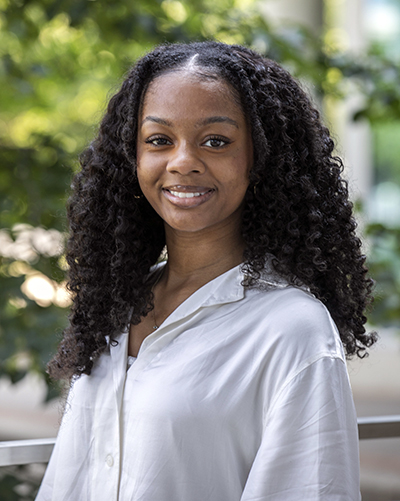
|
Alysha Johnson
Mentor: Renã Robinson |
|
|
||
|
"Standardizing Sample Preparation to Analyze Postmortem Brain Tissue in Alzheimer’s Disease"
Alzheimer's disease (AD) is the most common form of dementia and one in three seniors (65+) dies from AD in the United States. AD disproportionately affects the African American community, however, African American adults are greatly underrepresented in basic science research. Our laboratory aims to understand molecular changes in AD in African American adults using proteomics analysis. To accommodate routine and robust analysis of large numbers of postmortem brain tissue, standardized protocols are necessary. Post-mortem Posterior cingulate gyrus (PCG) tissues (N=70) from African American/Black adults who were either cognitively normal or had AD were prepared. Samples were randomized, blended, and grouped into five batches to prepare for tandem mass tag batching. This presentation will focus on the sample preparation steps and quality control measures taken to ensure robust samples are available for proteomics analysis. This includes the assessment of protein integrity from homogenization steps. Bio. Alysha Johnson is a rising second-year at the University of Virginia, double majoring in Chemistry and Spanish, and she is from Suffolk, Virginia. She is a graduate of the Project Lead the Way Biomedical Sciences Program where she completed college-level research in high school and a capstone which was featured to her school board. Alysha is a very accomplished student being an American Chemical Society Scholar, recipient of the Advancing Science Grant for the National Organization for Professional Advanced Black Chemical Engineers and Chemists. At her home institution she is a member of ACS, Student Council and BSA where in all of those she works to improve diversity efforts in science and her school. In her free time she enjoys traveling, language learning, dancing, and reading. She hopes to one day work in biotech or pharmacokinetics. |
|
|
|||
|
|
|
|
|||
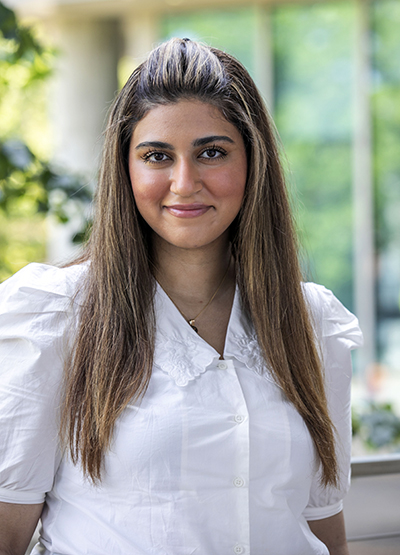
|
Delyar Khosroabadi
Mentor: Lars Plate |
|
|
||
|
"Mapping Coronavirus Nonstructural Protein 2 Regions Involved in Strain-Specific Interactions" Human coronaviruses pose a significant global health threat due to their recurring emergence. SARS-CoV-1 was the coronavirus strain involved in the 2002 outbreak, while SARS-Cov-2 is the causative agent of the COVID-19 pandemic. While extensive research has been conducted to better understand this family of viruses, there is significant variability in disease pathogenesis between SARS-CoV-1 and SARS-CoV-2 that is not well understood despite their high sequence similarity. Characterizing strain-specific host-virus protein-protein interactions will elucidate how changes in host factors may contribute to differences in the pathogenesis of SARS-CoV-1 and SARS-CoV-2. Human coronaviruses are positive-sense single-stranded RNA viruses. Upon cellular entry, the parts of the viral genome are translated into polyproteins that undergo proteolytic cleavage by viral proteases, resulting in the generation of 16 nonstructural proteins. Our research focuses on nonstructural protein 2 (nsp2). Previous work in the lab identified strain-specific interactors of SARS-CoV-1, examples of which include TMEM43, FLOT2, CLCN7, and OSTM1. Furthermore, strain-specific interactors for SARS-CoV-2 were also identified, with examples including PLD3, KIN, MAZ, and FOXK1. To better understand what regions of nsp2 contribute to these unique interactions, we create chimeras between SARS-CoV-1 and SARS-CoV-2 nsp2. Western blot and tandem mass spectrometry were then utilized to determine which sequence region of nsp2 mediates the strain-specific interactions. Characterizing strain-specific nsp2 interactors provides valuable insight into how coronaviruses manipulate cellular processes and may identify potential avenues for the development of host-directed antiviral treatments. Bio. My name is Delyar Khosroabadi. I grew up in Iran and moved to the United States at the age of 13. I am currently a rising senior majoring in biochemistry at California State University, Channel Islands, where I am part of two research groups. In the laboratory of Dr. Gareth Harris, I investigate the underlying mechanism and novel targets of serotonin using Caenorhabditis elegans as model organisms. I am also part of the laboratory of Dr. Ahmed Awad, where I synthesize and computationally analyze novel nucleoside analogs as potential pancreatic cancer chemotherapeutics. In addition to my research involvement, I have taken on the role of an embedded peer educator for courses like general chemistry and biological statistics. I also hold leadership positions in various clubs on campus. In my free time, I like to read. |
|
|
|||
|
|
|
|
|||
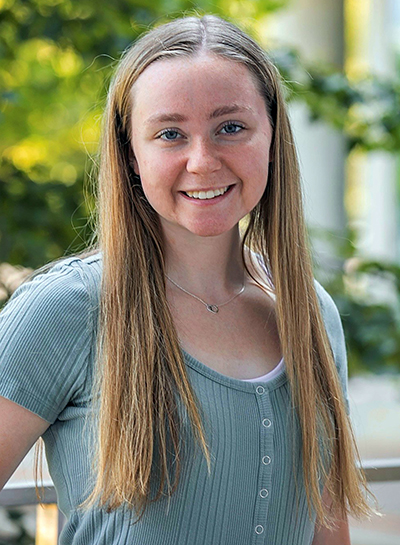
|
Jackie Martin
Mentor: David Cliffel |
|
|
||
|
"Developing an IL-1β Electrochemical Sensor and Integrating with a Fetal Membrane on-a-chipn" Experts theorize that inflammatory responses caused by excessive cytokine activation, primarily Interleukin-1 (IL-1), lead to all cases of Preterm Premature Rupture of the Membrane (PPROM) which leads to preterm labor (PTL). Recently, there has been a focus on developing electrochemical biosensors to detect these cytokine releases in tandem with organ-on-a-chip technologies. Here, we aim to develop one such sensor to monitor cytokine concentrations in a fetal membrane on-a-chip (FMOC) that is designed to mimic the fetal membrane’s ex vivo features. Known to be present within the cervix and fetal membrane at birth, Interleukin-1 Beta (IL-1B) has been directly correlated to PPROM and PTL when its bioactivity and concentrations are heightened. The sensor described here has been developed to detect IL-1B within Group B Streptococcus (GBS) infected cell tissues cultured in a FMOC. IL-1B standards were analyzed using a sandwich assay design to produce a calibration curve. The reproducibility of these curves was tested and statistically analyzed. The results from these trials suggest that the sensor serves as a more rapid alternative to traditional enzyme-linked immunosorbent assay (ELISA). The current design method should be optimized to further reduce the limit of detection and increase signal precision. Bio. Jackie Martin, a rising junior at Lebanon Valley College, is a double major in ACS Chemistry and Physics with a Mathematics minor. Whilst at Lebanon Valley College, Jackie has participated as a researcher on two separate projects. She extracted chitin, now being used for the fabrication of an antimicrobial polymer for surgical gloves, from shrimp and cicada shells through grinding, demineralization, and deproteinization in 2021 with the chemistry department. Additionally, Jackie used phase selective crystallization in lead bismuth gallate glass systems with a femtosecond laser to create and analyze glass structures in 2022 with the LVC’s physics department in coordination with Lehigh Valley University. Jackie has been awarded with Lebanon Valley’s Freshman Achievement Award in Chemistry in 2022 and Undergraduate Award in Analytical Chemistry from the American Chemical Society, Division of Analytical Chemistry in 2023. She was also presented the Neidig Fund for Chemistry, Departmental Award, and Honors College Scholarships. After completing her undergraduate degrees, Jackie plans to pursue a Ph.D. in chemistry with a focus in drug manufacturing. |
|
|
|||
|
|
|
|
|||
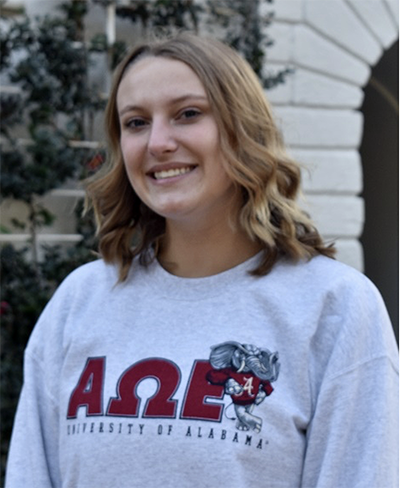
|
Megan Pierce
Mentor: Walter Chazin
Home Institution: University of Alabama
|
|
|
||
|
"Developing an Inhibitor of XPA-RPA Interaction using a Fragment-Based Drug Discovery Approach" Nucleotide excision repair (NER) is the primary DNA repair pathway used to repair bulky lesions, including those caused by UV radiation and adducts formed from platinum-based anticancer drugs. NER decreases the efficacy of platinum-based treatments by removing and repairing platinum lesions in the DNA. As a result, small molecule inhibitors of NER have the potential to sensitize tumor cells to platinum-based anticancer treatments. Xeroderma pigmentosum complementation group A (XPA) serves as an essential scaffolding protein specific to the NER pathway. A previous study has shown that the interaction between the XPA DNA binding domain (XPA DBD) and its binding partner replication protein A (RPA) is critical for effective repair of bulky DNA adducts and that mutations in its binding interface inhibits NER. Our goal is to develop a high affinity inhibitor to target the XPA-RPA interaction using a fragment-based drug discovery approach. Following this strategy, multiple small fragments are identified that bind at the XPA-RPA interface. Once identified, multiple fragments binding at different sites in the interface can be linked together to generate a specific inhibitor with a high binding affinity that is capable of disrupting the interaction. Nuclear magnetic resonance (NMR) was used to screen a ~14,000 fragment library to identify low affinity binding hits. Here, XPA DBD was expressed, purified and co-crystallized with a hit to identify the location and orientation of the fragment in the XPA-RPA interface. This hit can then be elaborated and linked in the future with other fragments to increase the overall affinity for the binding target. Bio. Megan is a rising junior attending the University of Alabama and is majoring in chemical engineering and chemistry. She is involved in Alpha Omega Epsilon, an engineering and technical science sorority, and Gamma Sigma Epsilon, a national chemistry honor society. Outside of the lab, she enjoys playing basketball, videogames, and going outdoors. Megan plans on attending graduate school to obtain a PhD in biochemistry after obtaining her bachelor's degree. |
|
|
|||
|
|
|
|
|||
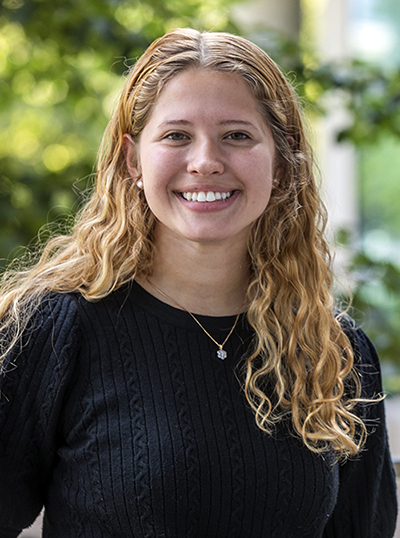
|
Lindsay Weissman
Mentor: Allison Walker |
|
|
||
|
"Investigation of the XPA-RPA Interaction in Nucleotide Excision Repair" Nonribosomal peptides, also known as NRPs are a naturally occurring product, and are responsible for biosynthesis of the peptide scaffolds that contribute to a large number of clinically significant natural product pharmaceuticals such as penicillin, vancomycin and rapamycin. The discovery of antibiotics through the adenylation of enzyme specificity was traditionally completed via radioactive assay, kinetic measurements and high throughput analysis. Each of these traditional methods come with their own drawbacks. In response to these drawbacks, another model can be developed; computationally guided means to identify different amino acids in the protein that affects substrate specificity. Specifically, tyrosine in the Tyc A protein in a phenylalanine domain. This is completed by using a convolution neural network subset of machine learning followed by the statistical coupling analysis of protein 7YWJ(TycA variant) to select for amino acids that can be incorporated in tyrocidine during biosynthesis. This is confirmed by an adenylation domain assay. The outcomes of this experiment demonstrate the ability for adenylation domain specificity through computationally guided methods. Bio. Lindsey Weissman is a rising senior attending Binghamton University in Binghamton, NY and is pursuing a Bachelor of Science in chemistry. She is interested in computational chemistry and began her exposure in the field in the Summer of 2022 under Dr. Jennifer Hirschi. After completing her undergraduate studies, she plans to go to graduate school for chemistry and computational chemistry. |
|
|
|||
|
|
|
|
|||
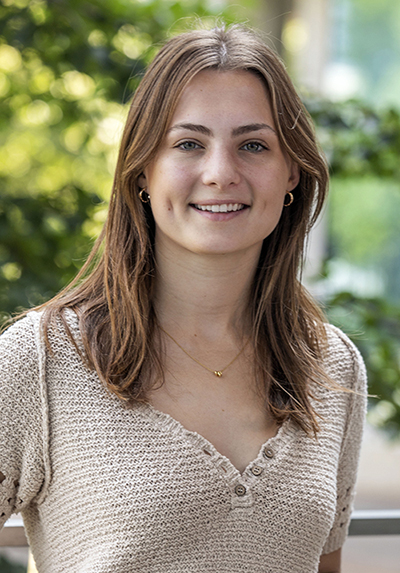
|
Charlotte Williams
Mentor: Frederick Haselton
|
|
|
||
|
"Detection of Fragmented Tuberculosis DNA in Urine" Tuberculosis (TB), a leading infectious killer, is typically diagnosed using sputum samples, but children and HIV infected individuals are sometimes unable to produce these samples. Urine samples from TB infected patients are more readily obtained and contain Mycobacterium tuberculosis DNA fragments, but urine contains DNases which degrade and shorten these fragments, limiting their detection by standard PCR methods. These fragments could be used as a diagnostic marker if they could be modified for use in a PCR reaction. A method was tested using an RNA capture template to adapt the fragments for PCR detection. To avoid laboratory contamination with TB products, we demonstrated the technique using an RNA template for a mouse GAPDH target. To test the design, fragments that matched or did not match the GAPDH template were spiked into each sample. The RNA template was used to capture the complementary DNA fragments, with the non-complementary fragment samples serving as controls. Reverse transcriptase was used to extend the fragments along the capture template to include both primer sites. Importantly, the RNA capture template was degraded after extension to prevent false positives. In preliminary tests, at a concentration of 106 copies/mL of fragment, the complementary fragments had an average cycle threshold (Ct) of 29.39 cycles with a standard deviation of 0.50 (n=4) . The non-complementary fragments did not amplify in most cases, and when they did amplify, their Ct value was always greater than that of the complementary fragments. These results indicate that this promising approach could be further developed to detect as few as 1000 copies/mL in urine samples, which will help to increase the population that can be tested for TB. Bio. Charlotte Williams is a senior at the University of Georgia, where she is majoring in Biochemical Engineering. She is participating in the National Science Foundation Chemical Biology REU at Vanderbilt University, where she is working in the Haselton Lab. At the University of Georgia, she has conducted research in the Marklein Lab on the optimization of mesenchymal stromal cell seeding parameters in 3D granular hydrogels. She is also Co-President of the UGA student chapter of the American Institute of Chemical Engineers. |
|
|
| NSF Chemical Biology REU | Advisor | Institution |
| Hannah Bhakta | Michael Stone | Valparaiso University |
| Hunter Davis | Allison Walker | Tennessee Tech |
| Madeline Herwig | Lars Plate | Augustana College |
| Alec Jones | Nathan Schley | Motlow State Community College |
| Cale Locicero | Jeffrey Johnston | Lousiana State University |
| Myaisha Lucas | Steve Townsend | High Point University |
| Esa Powers | David Cliffel | Grand Valley State University |
| Ira Samsonova | John Yang | University of Missouri |
| Christina Troll | Walter Chazin | Notre Dame University |
| Rosetta REU Program | ||
| Yingrong Chen | Jens Meiler | Emory University |
| US Naval Midshipmen REU | ||
| Claudia Downing | David Cliffel | United Stated Naval Academy |
| Ainslee Gabriel | David Cliffel | United Stated Naval Academy |
| Ricardo Limas | David Cliffel | United Stated Naval Academy |
| Eva Torres | David Cliffel | United Stated Naval Academy |
